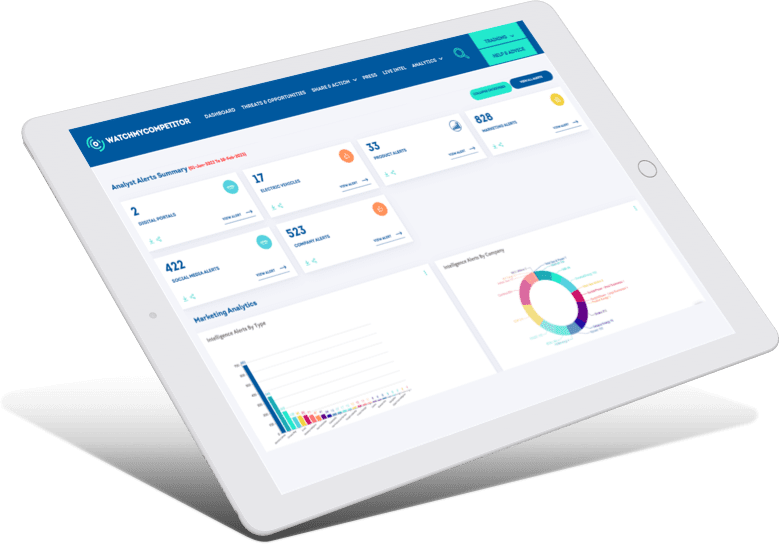In today’s world of business, where competition is fierce and consumer expectations are constantly evolving, staying ahead in the pricing game is a must. Competitive pricing analysis emerges as a crucial tool for businesses aiming not only to survive but thrive in the marketplace.
As you read on, we’re going to be diving into the details of competitive pricing analysis, shedding light on its significance, methodologies, strategic timing, and why it is indispensable for informed decision-making.

Understanding Competitive Pricing Analysis
Competitive pricing analysis serves as the bedrock for any effective pricing strategy. Its fundamental purpose lies in the systematic evaluation and comparison of product or service prices within a designated market segment.
This analytical process is not merely a competitive benchmarking exercise but a means for businesses to gain a practical grasp of their pricing standing relative to competitors.
The insights derived from these evaluations are instrumental in ensuring businesses remain competitive, as they can make informed adjustments to pricing structures to maximise profits while aligning with customer expectations.
The analysis of the pricing landscape becomes a compass for businesses, guiding them to strategically fine-tune their pricing strategies and secure an optimal position within the market.
Tangible insights into pricing strategies
Understanding competitive pricing analysis goes beyond a theoretical exercise. It equips businesses with tangible insights into the prevailing market dynamics and competitor pricing strategies, allowing for practical and data-driven decisions.
This knowledge empowers businesses to navigate the landscape of pricing, ensuring that their strategies are not only competitive but also adaptive to the ever-changing market conditions.
As businesses gain clarity on their pricing positions, they can make informed adjustments that resonate with consumer demands, fostering a resilient pricing strategy that stands the test of market fluctuations.
Why Conduct Competitive Pricing Analysis
The decision for businesses of all sizes to conduct competitive pricing analysis is rooted in its multiple advantages.
1) Discerning market trends
First and foremost, it functions as a crucial tool for discerning market trends. By understanding how competitors price their products, businesses gain an understanding of evolving consumer preferences and dynamic market dynamics. This insight serves as a strategic compass, allowing businesses to adapt swiftly to shifts in the market landscape.
The ability to stay attuned to these trends positions businesses to proactively respond to changing consumer demands, ensuring sustained relevance in the marketplace.
2) Access valuable insights
Also, competitive pricing analysis delves into the intricacies of competitor strategies, providing valuable insights that go beyond just pricing structures. Armed with this knowledge, businesses can make informed adjustments to their own pricing strategies, gaining a competitive edge. The significance lies not just in mirroring competitors but in leveraging this understanding to strategically position products in the market.
Methods & Tools For Competitive Pricing Analysis
Effective competitive pricing analysis hinges on the strategic utilisation of diverse methods and tools. While traditional methods like manual data collection and analysis still hold relevance, the current landscape has witnessed a revolution in the form of advanced technologies.
Among these, competitive intelligence platforms play a pivotal role in enhancing the efficiency and accuracy of pricing analysis. These platforms are designed to gather, process, and interpret substantial amounts of data, providing businesses with a comprehensive view of the pricing strategies employed by competitors.
A leading competitive intelligence platform
WatchMyCompetitor offers businesses a robust suite of tools for competitive pricing analysis. WatchMyCompetitor specialises in automating the data collection process, continuously monitoring competitors’ pricing strategies, and providing real-time insights.
The platform goes beyond traditional manual methods, ensuring that businesses stay ahead in the pricing game. By leveraging advanced analytics tools, WatchMyCompetitor enables businesses to derive actionable insights from the collected data.
This not only enhances the accuracy of the pricing analysis but also significantly reduces the time and resources required to stay informed about market dynamics and competitor moves.
When To Perform Competitive Pricing Analysis
Strategic timing is a pivotal factor in the successful execution of competitive pricing analysis. Businesses must engage in pricing analyses at specific points, strategically choosing moments like product launches, market changes or industry shifts.
This deliberate timing ensures that pricing strategies are in sync with the constantly evolving market conditions, providing businesses with a distinct competitive advantage.
By aligning competitive pricing analysis with key events, businesses position themselves to understand and respond to shifts in consumer behaviour, market trends and competitive landscapes in a timely and informed manner.
Recognising the opportune moments to conduct competitive pricing analysis is not just about staying current but is an essential element in proactive strategy formulation. Rather than reacting to changes in the market after they occur, businesses that strategically time their pricing analyses can adapt their pricing strategies pre-emptively.
This proactive approach empowers businesses to make well-informed decisions, optimise their pricing structures, and maintain a competitive edge in dynamic markets.
In essence, the timing of competitive pricing analysis is a strategic imperative, allowing businesses to navigate market shifts with agility and ensure that their pricing strategies are not only relevant but also anticipatory of industry changes.
How to Conduct Effective Competitive Pricing Analysis
Conducting effective competitive pricing analysis demands a methodical and structured approach. A step-by-step guide serves as a practical tool for businesses to navigate this process successfully
1) Data collection
Starting with a focus on thorough data collection is paramount. This entails gathering detailed information on competitor pricing and closely monitoring market trends. The comprehensive data acquired becomes the foundation for the analysis, offering businesses valuable insights into the prevailing pricing landscape.
2) Competitor benchmarking
Benchmarking against competitors is an integral step in the process, providing a contextual understanding of relative pricing positions in the market. This comparative analysis enables businesses to identify areas where their pricing may be competitive or areas for potential adjustment.
3) Embracing technology
Leveraging technology, such as machine learning algorithms, is another crucial aspect that can significantly enhance the depth and accuracy of the competitive pricing analysis. By incorporating advanced technologies into the analysis process, businesses can efficiently process large datasets, uncover patterns and extract meaningful insights.
The combination of thorough data collection, benchmarking, and technology integration equips businesses with a comprehensive understanding of their competitive position, facilitating informed decisions and the refinement of pricing strategies for sustained market success.
Challenges & Solutions In Competitive Pricing Analysis
While the benefits of competitive pricing analysis are evident, businesses often face challenges in its execution.
A) Challenges of competitive pricing analysis
Issues such as maintaining data accuracy, ensuring accessibility to competitor data, and grappling with the dynamic nature of pricing pose significant hurdles. Nevertheless, proactive measures can be implemented to mitigate these challenges.
To address concerns related to data accuracy, businesses can institute robust data verification processes. Rigorous checks and validation mechanisms help ensure the reliability of the data collected, providing a solid foundation for accurate analysis.
B) Solutions to consider
Accessibility to competitor data can be enhanced by exploring alternative data sources. Diversifying the channels through which competitor information is obtained broadens the scope of available data, reducing dependency on a single source and mitigating potential accessibility issues.
Conclusion
In conclusion, competitive pricing analysis is not merely a business function but a strategic imperative for those striving for pricing excellence in a competitive market. By understanding the ‘what,’ ‘why,’ ‘how,’ and ‘when’ of competitive pricing analysis, businesses can position themselves for success.
Armed with an understanding of the pricing landscape, they can navigate market dynamics effectively, maximise profits, and meet customer expectations, ultimately ensuring sustained success in the ever-evolving business environment.









